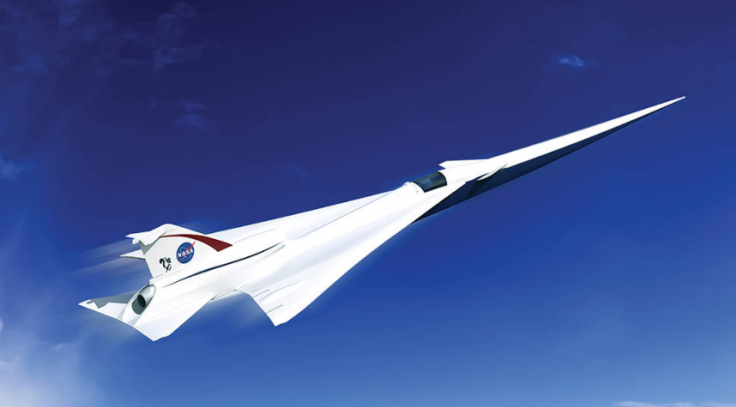NASA News: Tests For Lockheed Martin X-Plane Design For Quiet Supersonic Aircraft Begin

Almost a year after NASA said it would begin to work on a quieter supersonic jet, the agency and Lockheed Martin have begun wind tunnel tests on the Quiet Supersonic Technology (QueSST) X-plane preliminary design, NASA announced Monday.
During the next eight weeks at NASA’s Glenn Research Center in Cleveland, engineers will test the model to wind speeds of approximately 150 to 950 mph to understand the aerodynamics of the X-plane and aspects of the propulsion system.
“We’ll be measuring the lift, drag and side forces on the model at different angles of attack to verify that it performs as expected,” said NASA aerospace engineer Ray Castner. “We also want to make sure the air flows smoothly into the engine under all operating conditions.”
Through the tests, NASA will see how the X-plane performs just after takeoff, going at supersonic speed and back to the start of the landing approach.
NASA said it is possible for a supersonic airplane to be shaped in a way that the shock waves it forms when flying faster than the speed of sound won’t be so noticeable to the public, or even at all, facility manager David Stark said.
The aircraft design is shaped to split the shocks and expansions associated with supersonic flight. The separation dramatically reduces the aircraft’s noise to more of a “heartbeat” than a sonic boom, said Peter Iosifidis, the QueSST program manager at Lockheed Martin.
The agency expects the X-plane to clear the way for supersonic flight over land in the near-future.
“This test is an important step along the path to the development of an X-plane that will be a key capability for the collection of community response data required to change the rules for supersonic overland flight,” said NASA’s QueSST preliminary design project manager Dave Richwine.
NASA gave Lockheed Martin a contract in February 2016 for the preliminary design of the X-plane. If funding is approved, NASA will compete and award another contract for the final design, fabrication and testing of the aircraft.
The QueSST design is part of a series of X-planes by NASA’s New Aviation Horizons (NAH), which aims to decrease fuel use, emission and noise. The low boom flight demo will begin its flight campaign around 2020, and if there’s money, other NAH X-planes could follow.
© Copyright IBTimes 2024. All rights reserved.





















